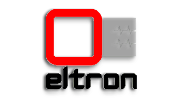What's new?
After several years of producing DTE1, we wished to refresh it by packing in a few more functions enhancing its capabilities. The housing stayed the same as that let us use the majority of the already existing production tools, but the internals of the device are completely overhauled.
The most noticeable enhancement is the addition of the third temperature sensor input, which lets the DTE1.1 efficiently control so called “stratification” hot water tanks. DHW systems of this sort become more popular in our region in recent years as they offer much improved performance in comparison with the simplest systems for a fraction of the cost of the “high-end” ones. In essence, stratification DHW tank is purposely built rather thin and tall when compared with traditional “boilers”. The reason is that water is intentionally let stratify inside the tank so that the hottest water (approximately 30% of the tank volume) is kept at its top, while somewhat cooler rest of the water mass sits below. The trick is in the height that heat exchanger and electrical heater are mounted into the tank: while heat exchanger that pumps energy gathered by the solar collector sits at the very bottom of the tank, the electrical heater is mounted at approximately 1/3 of the tank height from its top. This enhances system efficiency for two reasons:
-
It makes the whole volume of the tank available as a heat accumulator for free solar energy. It can be shown mathematically that the efficiency of the system is in direct proportion to the volume of the accumulator tank.
-
In times when solar energy is not available, it prompts the electrical heater to heat only 1/3 of the tank volume, which is quite enough for a single hot water use (e.g. a shower or a single use of washing machine).
So, this type of DHW systems can be taught of as a blend between basic entry-level models and premium ones with separate “heat accumulator + boiler” installations, with the cost similar to that of the former and the efficiency approaching that of the later. This ingenious system layout only needs to be accompanied with a differential controller able to regulate solar circulating pump according to water temperature at the tank bottom, and to display available hot water temperature and possibly regulate electrical heater according to temperature measured at the tank top. Thus, one more probe needs to be added to the existing two.
DTE1.1 is able to control only the solar collector circulating pump, but it does not control electrical heater. DHW system owners who would like to have fully automatic control of the whole system are advised to take a look at feature-rich
DTE2 controller family.
